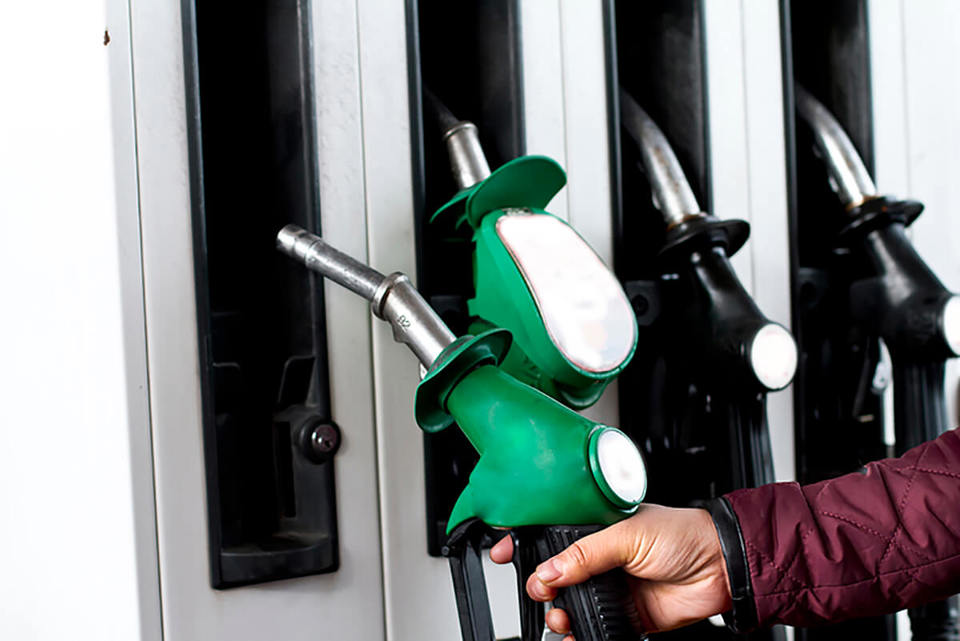The Government has launched a consultation on E10 petrol becoming standard at UK filling stations from next year.
By increasing the ethanol content of petrol to 10%, E10 has the potential to cut CO2 from transport by 750,000 tonnes per year. The equivalent to taking about 350,000 cars off the road, it says
Transport secretary Grant Shapps explained: “The next 15 years will be absolutely crucial for slashing emissions from our roads, as we all start to feel the benefits of the transition to a zero-emission future.
“But before electric cars become the norm, we want to take advantage of reduced CO2 emissions today.
“This small switch to petrol containing bioethanol at 10% will help drivers across country reduce the environmental impact of every journey.
“Overall this could equate to about 350,000 cars being taken off our roads entirely.”
Current petrol grades in the UK already contain up to 5% bioethanol, known as E5. E10 would see this percentage increased up to 10%, a blend which is already well used in other countries such as Belgium, Finland, France and Germany.
Grant Pearson, commercial director of Ensus UK on Teesside, said: “We welcome today’s announcement as the availability of E10 will instantly make petrol a lot cleaner, providing significant carbon reduction benefits to our environment on the long road to net-zero emissions by 2050.
“It is vitally important to protecting and potentially growing jobs in this industry, including many in the supply chain, and will bring tangible benefits to UK farmers and environmentally-conscious motorists.”
The consultation follows the roll-out of new labels at filling stations across the UK, which highlight the biofuel content of each fuel and help drivers to easily identify the right option for their vehicle.
LowCVP's managing director Andy Eastlake said: "Petrol cars have grown in popularity in recent years (in standard and plug-in hybrid form) and total sales of petrol have recently been growing - so it's more important than ever to put greener fuel in the green pump while we continue to work to electrify the UK's car and van fleets and seek solutions to decarbonise other sectors of road transport.
"We welcome these Government proposals and will be engaging with our Fuels Working Group to provide feedback to the consultation.
"We believe that the introduction of E10, including strict sustainability standards for product feedstocks - which were developed by the LowCVP - can make a significant contribution to CO2 reduction from road transport and help in the drive towards net zero while also supporting UK industry."
However, RAC fuel spokesman Simon Williams said that introducing E10 as the standard petrol will pose some challenges.
"Firstly, as the RAC Foundation points out, there could be as many as 600,000 vehicles on our roads that aren’t compatible with the fuel," Williams explained.
"Many of these are likely to be owned by those from lower income backgrounds and while it is welcome that E5 petrol is not being phased out altogether, owners of these vehicles will face higher fuel costs – and will also have to hunt out those forecourts that still sell E5.
"Some retailers will also not have the capacity to be able to provide both E5 and E10 fuels on forecourts, so the impact is likely to be most keenly felt by those with incompatible vehicles in rural areas."
Williams says it is also vital that owners of affected vehicles are aware of the changes. "We'd like to see the DVLA writing to these owners to inform them that E5 will no longer be the standard premium grade, and to let them know their options," he said.
"This, alongside a trusted online resource where drivers can quickly identify if their vehicles are E10 compatible or not, will go a long way to avoiding any expensive problems from filling up wrongly with the new blend.
"For the overwhelming majority of drivers with compatible vehicles, the introduction of E10 petrol will make little difference other than a possible slight reduction in fuel economy."
To view the E10 consultation and respond, click here.
Government announces investment in centres of excellence
The E10 consultation comes as the business secretary and COP26 president Alok Sharma announced a £36.7 million investment to design, test and manufacture electric machines in some of the UK’s most polluting industries.
Sharma says £30m will be used to create four new centres of excellence – based in Newport, Nottingham, Strathclyde and Sunderland.
The network will specialise in researching and developing technologies to electrify transport, helping the UK reach net zero emissions by 2050.
A further £6.7m will be awarded to 14 projects that aim to help the final buyer in supply chains – such as large automotive manufacturers – access the parts and components they need to develop electric machines with ease.
Sharma said: “The electric revolution is an opportunity for our transport sectors to reduce the dependence on fossil fuels.
“The UK is leading the way in developing cleaner technologies to help us reach our target of zero emissions by 2050 and these new centres will play an important part in that.”
More than 30 partner research and technology organisations will be a part of the industrialisation centres.
The network will be headed up by lead partner Newcastle University, along with 21 other universities from around the UK, plus 13 research and technology organisations.
The business secretary also today announced the winning projects for the government’s Driving the Electric Revolution challenge.
The 14 winning projects aim to help boost supply chain efficiencies in industries affected by electrification, from aerospace to automotive, to energy and rail.
A total of £6.7m will be shared by the 14 projects, which comprise 38 major businesses from around the UK, including GKN, Jaguar Land Rover and Rolls-Royce.
Transport minister Rachel Maclean said: “Funding and increased support for state-of-the-art electric manufacturing centres will help people, goods and services move across the nation, in a greener, safer and more reliable way than ever before.
“By investing in world-leading science and engineering institutions, we are creating a modern transport system, bringing communities closer together while reducing the UK’s contribution to climate change.”
Examples of the winning Driving the Electric Revolution challenge projects include:
- Electric machines – led by Belcan Engineering Services, this project will develop and help scale up UK manufacturing capability for electric machines that can be used in planes and cars.
- Power electronics – run by the Compound Semiconductor Centre in Cardiff, this project will ensure that semiconductor materials – an essential building block for the next generation of electrification technologies – can reach the final buyer in a supply chain more quickly and efficiently.
- Drives – this will enable project partners to increase their productivity in manufacturing drives and enable the lead partner – Magtec of Sheffield – to increase its supply of electric drivelines for large electric vehicles, such as bin lorries.
Both the new centres and the winning projects are part of the Government’s Driving the Electric Revolution challenge, which aims to help the UK seize the economic opportunities from the global transition to clean technologies and electrification.
The Driving the Electric Revolution centres and the Driving the Electric Revolution challenge together aim to position the UK to seize the economic opportunities from the global transition to clean technologies and electrification.
They aim to help businesses across numerous sectors including transport, energy, construction and agriculture to invest and work together to capitalise on the UK’s strengths in this technology.
Driving the Electric Revolution centres – locations
- DER Centre North East – CESAM (Centre for Sustainable Advanced Manufacturing), International Advanced Manufacturing Park, Sunderland.
- DER Centre Scotland – University of Strathclyde - located in NMIS (The National Manufacturing Institute Scotland) and PNDC (Power Networks Demonstration Centre).
- DER Centre Midlands – Distributed facilities, with a focus on the Power Electronics & Machines Centre, Jubilee Campus, University of Nottingham.
- DER Centre South Wales & South West – Distributed facilities, coordinated by the Compound Semiconductor Application Catapult Innovation Centre, Newport.
Driving the Electric Revolution competition
Further winning consortia include:
- Paragraf of Cambridge, working with Compound Semiconductor Applications Catapult, Rolls-Royce, Semelab and Aero Stanrew.
- Magway of Wembley, London working with Force Engineering, Aecom and Space Syntax.
- Search for the Next of Nottingham, working with Semefab.
- Dynex Semiconductor of Lincoln, working with City University of London.
- Yasa of Oxford, working with Compound Semiconductor Applications Catapult.
- ZF Automotive UK of Shirley, Solihull working with Romax Technolgy.
- Lentus Composites of Eynsham, Oxfordshire, working with NCC Operations.
- WMG at the University of Warwick, Voltalogic, Ashwoods Automotive and Hyrdo Alluminium Rolled Products.
- API Capacitors of Great Yarmouth working with Compound Semiconductor Applications Catapult and Integral Powertrain.
- Cogent Power working with Compound Semiconductor Centre, Microsemi Semiconductor and Advanced Hall Sensors.
- C Brandauer & Co of Birmingham working with WMG at the University of Warwick and Jaguar Land Rover.




















Login to comment
Comments
No comments have been made yet.